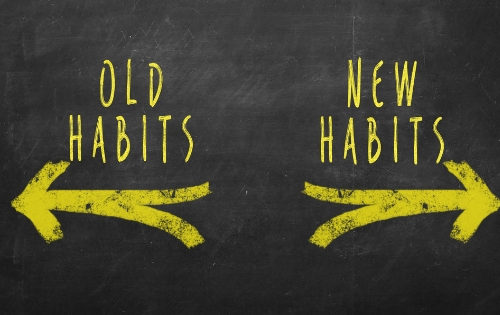
Why We Eat: Exploring the 7 Types of Hunger
Have you ever thought about why you eat? I mean, beyond the obvious reason that you must eat to stay alive?
In our culture, it’s normal to eat for reasons other than being hungry. Perhaps you eat when you’re bored, or when you’re stressed. You might eat because the clock says it’s dinnertime, or simply because the food is there and it looks good.
The Oxford dictionary defines hunger in two ways. As a noun, hunger is:
a feeling of discomfort or weakness caused by lack of food, coupled with the desire to eat.
As a verb, hunger means:
To have a strong desire or craving for.
When you think about it, these definitions are quite distinct. I’m hungry because I haven’t eaten all day. This refers to a physical feeling, one that is driven by our biological need for fuel to keep our bodies running.
On the other hand, hunger as a verb refers to longings and desires of all kinds. According to Jan Chozen Bays, author of Mindful Eating: A Guide to Discovering a Healthy and Joyful Relationship with Food, there are seven different types of hunger:
1) Eye hunger
2) Nose hunger
3) Mouth hunger
4) Stomach hunger
5) Mind hunger
6) Cellular hunger
7) Heart hunger
When I first learned about these distinctions, I had a “truth bomb” moment.
I’ve never thought about it this way before, but now that it’s in front of me, it makes SO much sense.
Learning about the seven types of hunger helped me to understand all of the reasons I ate when I was deep in the throes of a very challenging relationship with food. However, these distinctions are helpful for everyone, because we all eat. And in my experience, it’s rare to come across a person who ONLY eats to satisfy physical hunger. In fact, I can’t think of a single person I know who fits this description. Can you?
The Seven Types of Hunger
1) Eye hunger. Eye hunger is when you SEE a tempting-looking food, and then you want it. The cookies in the office breakroom are a perfect example. You probably walked into the breakroom without any thought of eating a cookie, but as soon as they appear in front of you, you want one.
2) Nose hunger. Nose hunger can also be thought of as the “Cinnabon effect.” You’re in the mall, minding your own business, when all of sudden, you’re hit with the sweet smell of fresh-baked cinnamon rolls. You hadn’t thought about it beforehand, but as soon as that luscious scent hits your nose, you want a cinnabon.
3) Mouth hunger. Have you ever craved something crunchy? It didn’t really matter what it was, as long as it promised to provide a satisfying crunch. Enter mouth hunger: the craving for foods that will provide us with a specific sensation in our mouths. Crunchiness or creaminess are the two most commonly-craved sensations.
4) Stomach hunger. Stomach hunger is the most obvious of the seven types. When our stomachs are empty and growling for food, our bodies are telling us that we have a physical need for energy and nourishment.
5) Mind hunger. Mind hunger is full of “shoulds.” Usually mind hunger consists of all that we’ve heard about nutrition and healthy eating. I should eat some vegetables. I should eat more protein. The more we pay attention to dietary advice from the media, or the more we read diet books, the more mind hunger comes into play.
6) Cellular hunger. Have you ever been on a vacation where you indulged in plenty of rich food and drink? Predictably, after a few days, you start to crave a simple meal. A small bowl of steamed veggies sounds amazing. This is your body wisdom; your cells are telling you what they need.
7) Heart hunger. Heart hunger is responsible for emotional eating. When we eat because we’re sad, or because we’re lonely, or because we’re feeling unfulfilled, we’re trying to assuage that deep, soul-level hunger with food.
The Power of Awareness
Now that you know about the seven types of hunger, I encourage you to start becoming aware of how each type of hunger plays into your life. When you’re at Starbucks and you see the chocolate-chip muffin, you can identify what you’re feeling: “That looks good. My eye hunger wants that.” Oftentimes, being able to name the reason you want a food takes away the power of that food. There’s nothing wrong with eating that muffin, but if you realize that eye hunger is the only factor at play, you might choose to pass, knowing that as soon as the sweet treat leaves your line of sight, you will lose your desire for it. Out of sight, out of mind.
Here’s another example. Next time you’re craving something crunchy, you can identify that as mouth hunger. “Oh, my mouth is craving the sensation of a crunchy food.” Once you have that awareness, you can choose to make a mindful substitution if you’d like – perhaps baby carrots instead of chips. If all you truly want is the crunch, the carrots will satisfy.
When mind hunger comes into play, I encourage you to recognize it for what it is – and then gently let go of the “shoulds.” Instead, take a few deep breaths and try to tap into your cellular hunger instead. Your body knows better than any diet expert what’s best for you.
Finally, let’s talk about heart hunger. This one goes the deepest, and is undoubtedly the juiciest. Oftentimes, my work with clients centers around helping them to figure out what their hearts are hungry for. Then, if what they want is accessible, we work on getting it. Perhaps it’s a desire to step out and try new things. Or a longing to be accepted by peers. Not surprisingly, when we work on these deeper issues, the desire to eat emotionally starts to go away on its own.
Not ready to go that deep? Although I believe it’s necessary to take the plunge at some point if you ever hope to find a healthier relationship with food, you may not be ready yet. Which is completely ok. In the meantime, I encourage you to start by identifying heart hunger for what it is. When you do, you might find that on some days, an alternate activity nourishes you more than food. Personally, I find that practicing yoga, curling up with a good book, or taking a bath are great short-term remedies for heart hunger.
As we cultivate awareness, change begins to unfold. I encourage you to pay attention to your habits around the seven types of hunger – and then let me know what happens!
*For more information on the seven types of hunger, I highly recommend checking out Mindful Eating: A Guide to Discovering a Healthy and Joyful Relationship with Food.



